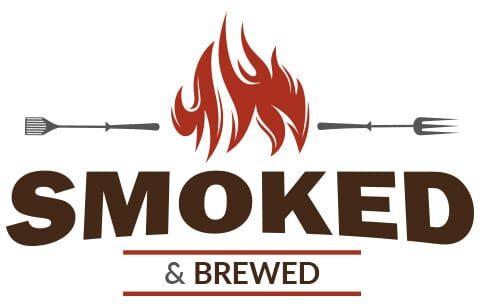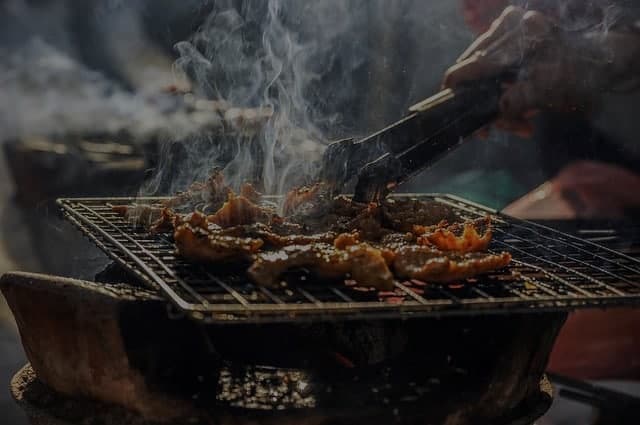Whether smoking meat is the same as cooking has been a matter of misunderstanding. If you have happened to ask around, I’m sure you have gotten answers like ‘smoke doesn’t cook’. This is a method that has been in use for years and it dates back to when people first live in the caves. Traditionally, it was mostly used as a method of meat preservation. The modern method involves putting meat over a fire in a smoker and wood is added to the fire to give a smoky flavor to the meat.
Is smoking meat the same as cooking? In most cases, yes, smoking also cooks the meat. Cooking in the most basic definition is the process when food is transformed by applying heat. Where heat is involved like in the case of hot smoking, it’s a method of cooking. But in the case of cold smoking, it’s more of a preservation method since it doesn’t require heat.
Below, I will break down the basics of smoking to show you how it varies from cooking. Of course, when you are smoking with heat, you are by default going to also be cooking.
Components of Smoke
Smoke contains more than 100 different compounds. Some of them are solid like ash, some are gases like Carbon Dioxide and Carbon Monoxide and some are liquid like water vapor. However, the exact content of smoke depends on which wood is being burnt, how much moisture is contained within and how much oxygen is available for burning.
There are two compounds of smoke that are of great significance as far as smoking meat is concerned; syringol and guaiacol. The former is responsible for the aroma while the latter is for flavor. The meat will taste even better with the increasing quantity of the compounds.
Why do we smoke meat?
Smoking meat is a hectic project to work on for beginners. It can take you a whole day depending on the size of the meat. But why would someone engage in such an ordeal while there are other, much faster methods of cooking meat? Here are the reasons.
Flavor
As the meat is smoked, it absorbs some comforting flavor of the smoke itself creating a unique, natural and tasty product.
The main challenge here is creating enough guaiacol for flavor along with syringol. It may be too complicated for many of us, but it’s possible. It’s just a matter of creating more smoke in the smoker. Don’t smoke it too much though, because it can make the meat acidic, very bitter and unpleasant to eat. More smoke can be created in two simple ways — limiting the amount of air and oxygen into the smoker and using wet wood.
The Bark
Absorbing smoke into the meat creates a crispy, spicy crust-like texture that forms on the outside of the meat during smoking. One of the tastiest parts of the meat is its bark. It’s formed from smoke reacting with the meat, moisture and spice rub in a Maillard reaction.
Tenderize the meat
Smoking is a slow-and-low cooking process that enables you to create a softer and more tender piece of meat. This process keeps the moisture in the meat even at the time of smoking resulting in a tender and juicy product.
Smoking methods
Based on the temperature used smoking can be broadly categorized into two methods.
1. Hot Smoking
This is where the food is cooked while being flavored with smoke. It’s our usual barbecue, performed at a temperature of at least 150 F.
2. Cold Smoking
This is where you flavor the meat with smoke until it’s done without cooking it. This can be achieved by placing meat further away from the fire or in another chamber where the smoke can reach it.
How To Smoke Meat: Basic Guidelines
For those who have been seeking a guideline to help improve their skills, here are some simple steps you can follow and achieve the delicacy that is so smoky.
Select right meat for barbecuing
Just by picking the right meat, you are halfway done. You can have the best smoker, the best skill set but if you don’t choose the right meat, you won’t achieve your desired juicy flavor. Make sure it’s from a high-quality source. Just head to your local butcher where the meat is less likely to contain filler. Avoid frozen meat if you usually buy it from the supermarket.
Choose tougher cuts: Fattier, tough cuts of meat are usually the best ones. Tough cuts often have plenty of fats and collagens.
Here are some of the popular meats you can choose from:
- Brisket: It’s always the best and the most popular choice.
- Pork Butt: The second most popular choice.
- Rib:
Preparing the meat
Trim to remove the fat cap
The fat caps will not penetrate the meat as it melts, so they are destined to be lost into the fire even if you spare them. Trimming is done to make the meat less dense and make a better bark.
Trim to get the best shape. A neat and nicely shaped piece of meat all the way around will help it cook better.
Tying up
Tying up makes a compact package and this will help it cook more evenly. Some meat like turkey usually comes trussed up for easier packaging, you can take advantage of that and smoke your meat in decent shape. Tying makes it easier to turn, move more frequently and prevent the skin from splitting.
Seasoning
- Salt
Salt does the following: penetrate the meat tenderizing it, making it easier to chew and pleasant to eat. This creates a concentration in the meat that makes water molecules penetrate the meat and thus making it moisturized even during smoking. It’s the only seasoning that will penetrate the meat. - Pepper
This spice helps balance out the salt and improves palatability. - Brines
Brine is very salty and thus should be seasoned with care or else you may end up over-salting.
You can use wet brine, a solution of salt and other spices mixed into water. It can also comprise acids such as vinegar or lemon juice to tenderize the meat further.
Let the meat marinate in the brine for several hours to absorb as much moisture as possible. - Dry Rubs
Apply this just a few minutes before putting the meat on the smoker. Remember, herbs and spices in rubs don’t penetrate the meat and stay on the surface. Rubs are usually made of salt, pepper, garlic, and onion. So in case you want some unique flavor, you can add one of your own.
If you would like to come up with sauce you are free to. All you have to remember is that it is not applied until the meat is removed from the smoker.
Select Your Wood
Now that you made your meat ready for smoking, you must get the wood ready for the smoker. The main reason for smoking meat is to get that entire delicious wood smoke flavor into it. The kind of wood also has some of the effects on the final flavor. A choice has to be made as to which one will give you the best product. Here are some commonly used ones you can choose from.
Types of woods
Hickory: a common choice for smoking with a very strong smoky flavor. It is good for smoking beef, chicken, and pork.
Oak: A very popular choice as well. It works well with every meat you put on the grill but it’s much better with beef and seafood.
Elder: Great for beef, chicken, pork, and seafood.
Apple: Good for everything on the smoker but great for chicken and pork.
Cherry: Great for beef, chicken, pork, and seafood.
Maple: Good for every meat on the smoker but great for beef and pork
Pecan: Great with all meats on the smoker.
You can find different forms of wood available — chips, chunks, logs or pellets. Avoid the too much smoky pine and other sappy woods; they will make your meat bitter. Dry woods have little moisture and are not ideal for smoking.
How you prepare the wood for burning will depend on the smoker you are using. For instance, when you are using a charcoal grill, you can prepare the wood chips by either putting them in an aluminum cooking tray or wrapping them in aluminum foil. Then place the pouch of a tray full of wood chips either on top of the charcoal or above one of the gas burners. As the wood burns, they give out smoke. How much you will need, will depend on the amount of smoke you want.
How to Smoke Beef for Beginners
Recipe
Ingredients
- 1 tablespoons pepper
- 1 tablespoon garlic powder
- 1.5 tablespoons brown sugar
- 1 tablespoon dry mustard
- 3 tablespoons coarse sea salt
- 6 pounds beef
- Several bags of oak wood chips or your pick for smoking.
- Heat thermometer
DIRECTIONS
- Mix the dry ingredients in a small bowl and rub the resulting blend all over the beef, massaging and patting it into the meat. Cover and refrigerate for at least 1 hour.
- Start your smoker, bringing the temperature up to 160 F. Add oak chips.
- Place the beef on the smoke, insert a meat thermometer.
- Smoke for 8-12 hours, monitoring temperature via thermometer doing the necessary adjustments.
- When the beef has reached the internal maximum temperature of 145 F, remove from heat. Cover with foil and let it rest for at least one minute.
- Pull beef with forks, claws or gloved hands.
- Serve on buns with the sauce of your choice.
The bottom line: Smoking meat is one way to add flavor. However, it requires a lot of preparation and time during the process more so when you are a beginner. The best product is achieved by following all the guidelines, step by step.
Scot has loved smoking food in his free time for the last few years. Each major holiday or off-weekend, Scot spends days testing and prepping new recipes for perfection.

